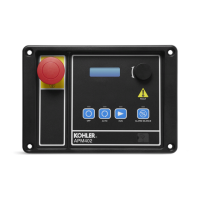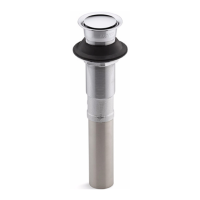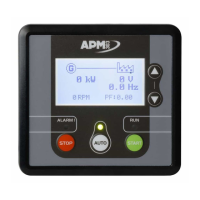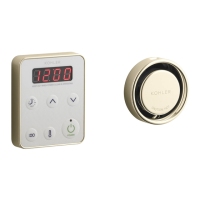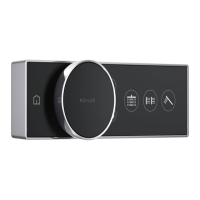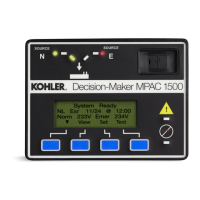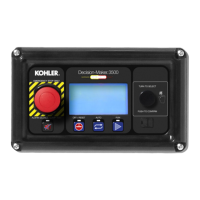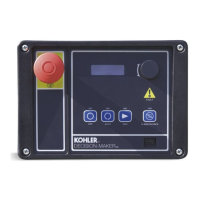4 — PROGRAMMABLE PARAMETERS
Curtis AC F2-A, F4-A, F6-A Motor Controllers – FOS 4.5 – April 2022 Return to TOC
pg. 70
APPLICATION SETUP — CAN INTERFACE MENU
PARAMETER ALLOWABLE RANGE DEFAULT DESCRIPTION
CANopen Interlock
CANopen_Interlock_Enable
0x34B4 0x00
On/Off
On/Off
Off When programmed On, CAN NMT State must = 5 (operational
state) in order for the interlock to be set.
This parameter also occurs in the CAN Interface 2 menu.
Changing it in one menu also changes it in the other location.
Baud Rate
CAN_Baud_Rate
0x2001 0x01
–1 – 4
–1 – 4
0 Sets the CAN baud rate for the CANopen Ancillary system:
–1 = 100Kbps
0 = 125Kbps
1 = 250Kbps
2 = 500Kbps
3 = 800Kbps
4 = 1000Kbps.
Heartbeat Rate
CANopen_Heart_Beat_Rate
0x1017 0x00
16 – 2000 ms
0 – 2000
100 ms Sets the transmission rate of the CAN heartbeat messages from
the CANopen Ancillary system.
Emergency Message Rate
CAN_Open_Emergency_Inhibit_
Time
0x1015 0x00
0 – 6554 ms
0 – 65535
16 ms Sets the minimum transmission rate of the CAN Emergency
Messages from the CANopen Ancillary system. This prevents
quickly changing fault states from generating so many
emergency messages that they ood the CANbus. The step size
is 10 ms.
CAN NMT State
CAN_NMT_State
0x32A4 0x00
0 – 127
0 – 127
Read Only Controller CAN NMT state:
0 = initialization
4 = stopped
5 = operational
127= pre-operationalThis Read Only variable also occurs in the CAN Interface 2 menu.
CAN Node ID
Can_Node_Id
0x2000 0x01
0001 – FFFFh
1 – 65535
0026h
(0x26)
(38d)
Displays the controller’s Node ID, in hexadecimal.
For example: 0x26 = 38d
Do not assign 0x00 as a device’s CAN Node ID. Such an ID will
never be detected by CIT or the 1313 HHP, and therefore be
inoperable.
CAN ports 1 and 2
If the controller is equipped with two external CAN ports (Ports 1 and 2), each may have a unique
baud rate, and CANopen node ID. Either may be used for the secure node connection to the Curtis
programming tools (see Appendix D). Note that only one port at a time may be used for Curtis tools
connection. Note also that there is a single CANopen NMT state for the controller, which will be
indicated via heartbeats unique to each port’s node ID, but which can be changed by sending NMT
commands to either port. In addition, CANopen Emergency messages will be transmitted to all CAN
ports. Each port has a unique CANopen PDO conguration, and may receive and transmit unique
data for each port.
Non-isolated CAN models
CAN1 has the internal 120Ω termination when pins 21 and 34 are connected. CAN2 does not have
the internal 120Ω termination. For applications requiring CAN2 termination, add it externally from
the controller. On these models, the CAN-circuit reference is from the controller’s I/O ground (pins
7 and 18).
CAN1
CAN1 L = pin 35
CAN1 H = pin 23
CAN1 120-Ohm termination: externally connect (short) pins 21 and 34.
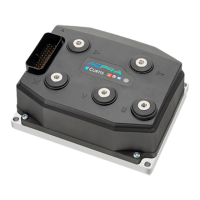
